Ober’s Test
- This test is described by Frank Ober.
- The test is used for tightness of TFL means tensor fasciae lata & ITB means iliotibial band.
- This test is published in an article which is known as Back Strain and Sciatica
- This article discussed the relationship of a contracted tensor fasciae lata [TFL] & iliotibial band [ ITB] for too low backache in May 1935.
- This test was later revised in the year 1937 which is cautioned for avoiding the hip internal rotation [ IR ] means medial rotation & flexion while carrying out of the test.
Purpose of the Ober’s Test
- This Ober’s test is used to for evaluates a tight & contracted /inflamed Tensor Fasciae Latae (TFL) & Iliotibial band (ITB).
- This Ober’s test must not to confounded with Noble’s test & the Renne test, these two other tests are commonly used to detect the iliotibial band syndrome.
How do you perform the Ober’s Test?
Position of the Ober’s Test :
- The starting position for the test is side-lying with the side of the affected.
- The bottom of the knee & the hip must be kept flexed to flatten with the lumbar curve.
- The examiner stands behind the patient & firmly stabilizes to the greater trochanter/pelvis to prevent movement in any direction.
- Then Grasp to a distal end of the affected leg of a patient with the help of one hand & other hand is flex the leg for to a right angle at the knee.
Test performance of the Ober’s Test :
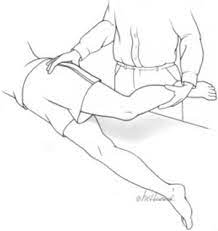
- Extend & abduct the hip joint.
- Then Slowly lower the leg toward the table with the adduct of the hip- till the motion is restricted.
- Ensure that the hip does not internally rotate[medially rotate] & flex the hip during the test & the pelvis is must be stabilized.
- As allowing with the thigh to drop into flexion & internal rotation [ medial rotation ] which is ‘give in’ to the tight Tensor Fasciae Latae [ TFL ] not accurately with the test of the length.
Results of the Ober’s Test :
- If the Iliotibial band[ ITB ] is normal, the leg is adduct with the thigh is dropping down to slightly below the horizontal & the patient is not experiencing any pain.
- In this situation, the test is called negative.
- If the Iliotibial band [ ITB ] is tight, the leg remains in the abducted position & the patient is experiencing lateral knee pain, in this situation, the test is called to positive.
- When the knee is flexed during the test, greater stress is placed on the femoral nerve.
- If neurological signs like pain/paresthesia occur during the test, the examiner should consider pathology affecting the femoral nerve.
- Mostly tenderness over the greater trochanter which is lead the examiner for to consider of trochanteric bursitis.
Modification of the Ober Test :
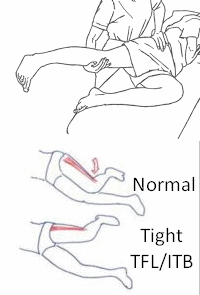
- A modification of this test is first recommended by the Kendall into Posture & Pain.
- In this test, apply to less strain on the medial aspect of the knee joint / give to less tension on the patella & less interference by too tight of Rectus Femoris muscle & it is provided to a complete stretch on the Tensor Fasciae Latae [ TFL ].
Test position of Modification of the Ober Test:
- The patient is in a side-lying position with the underneath leg is flexed at the hip & the knee to flatten the low back.
- Then examiner stabilizes the pelvis & keeps the lateral trunk in contact with the table.
- Note = Downward lateral tilt is equivalent to the hip abduction & that is “give in ” to a tight TFL [Tensor Fasciae Latae ].
Test performance of Modification of the Ober’s Test :
- The examiner extends the leg.
- Ensure that leg is not internally rotated means medially rotated.
Results of Modification of the Ober’s Test :
- With the knee is straight & the pelvis into a neutral position which is the thigh drops about 10 degrees below the horizontal.
- It is suggestive of the normal length.
- This leg fails to drop indicating tight ITB [ Iliotibial band ] and TFL [Tensor Fasciae Latae ].
Evidence of the Ober’s Test :
- It is limited to many studies to support the validity of this test.
- A study by Reese et al
- It is the use of an inclinometer for the measure of hip adduction in both the Ober test & the modified Ober test which appears to be a reliable method for the ITB [ Iliotibial band ] measurement of the flexibility.
- the technique is quite easy to use.
- It is demonstrated to significant difference in ROM [ range of motion ] between testing with the affected knee flexed vs. knee extended,
- Reliability of the affected knee flexed = 90
- Reliability of the affected knee extended = 91
- Modified Ober test is allow significantly greater hip adduction with a range of motion [ ROM ] than the Ober test,
- But the study is findings into An Anatomic Investigation of the Ober Test which is described to Willet GM et al.
- It refutes the hypothesis of the [ Iliotibial band ] ITB plays the role in limiting hip adduction during either version of the Ober test & questions the validity of these tests for determining ITB [ Iliotibial band ] tightness.
- In The findings of underscore which is the influence of the gluteus medius & minimus muscles as well as of the hip joint capsule on the Ober test findings.
- This study result suggests that the Ober test assesses the tightness of structures for proximal to the hip joint, like the gluteus medius & minimus muscles & the hip joint capsule, rather than the ITB [ Iliotibial band ].
FAQs
What does the Ober test for?
The Iliotibial Band (ITB) and Tensor Fasciae Latae (TFL) are assessed using Ober’s test. Two more tests that are frequently used to identify iliotibial band syndrome are Noble’s test and the Renne test.
What is Ober’s test for iliotibial band?
The lower leg should be flexed at the hip and knee for stability throughout this examination when the patient is resting on their side. The examiner then fixes the pelvis with one hand while passively abducting and slightly extending the upper leg.
How do you treat an Ober’s test?
Ober’s test for tightness of the iliotibial band should be carried out if it is suspected. Ober’s test results that are favorable are followed by the prescription of a lateral sole wedge and the beginning of the patient’s stretching program. These exercises have been shown to lessen and stop the development of ITBFS symptoms.
What is the difference between Ober and modified Ober test?
The modified Ober’s test is the same as the original Ober’s test, with the exception that the affected (upper) limb is extended at the knee rather than flexed to lessen the impact of a tight rectus femoris at the two joints. In comparison to Ober’s test, medial rotation is of greater importance.

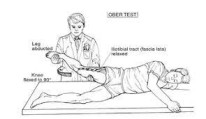
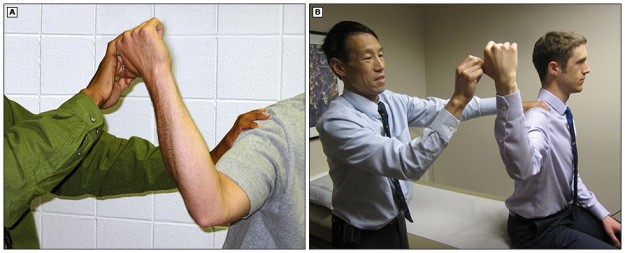
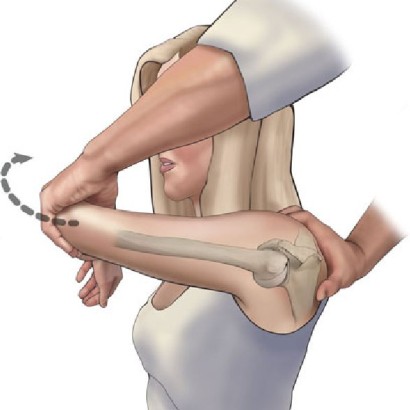
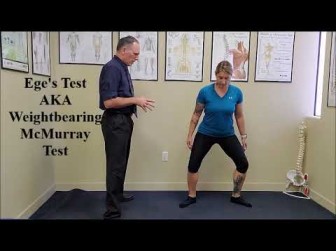

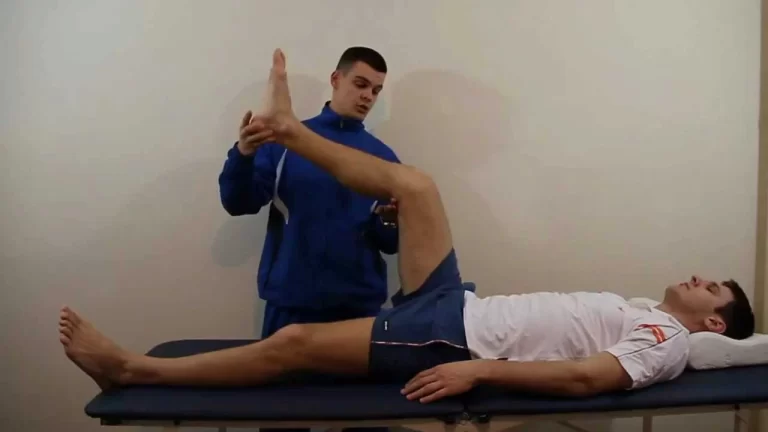
One Comment